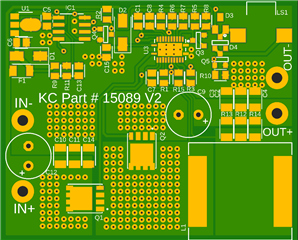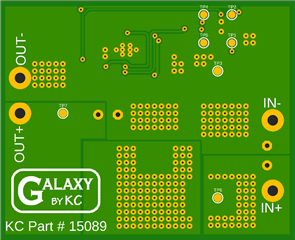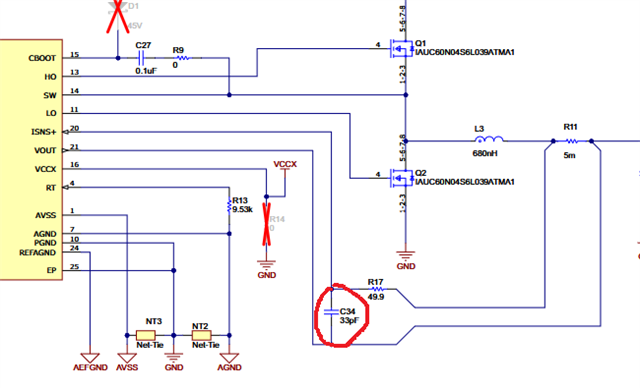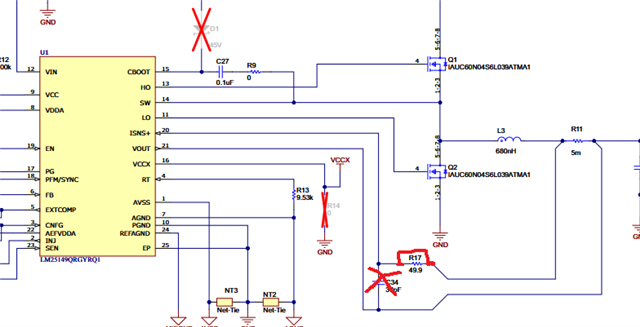Tool/software:
When I use the Automotive version (LM25149-Q1) then this design works well up to 11A, then the output voltage drops from 13V to 11V, and then it continues to power at 11V until 17A load, which is when it shuts down...
I made samples of this design 8 months ago with the Automotive part and they have tested perfectly and they still work perfectly now, they put out 13V at 16A and shut down at 17A...
I then made 500 production boards with the non-automotive part and they are VERY unstable (lots of audible noise)... Changing to the automotive part makes them quit making noise, but then they have this strange 2V drop at 11A load...
What are the differences between the automotive part and the non-automotive part and why is the automotive stable and not the regular?





